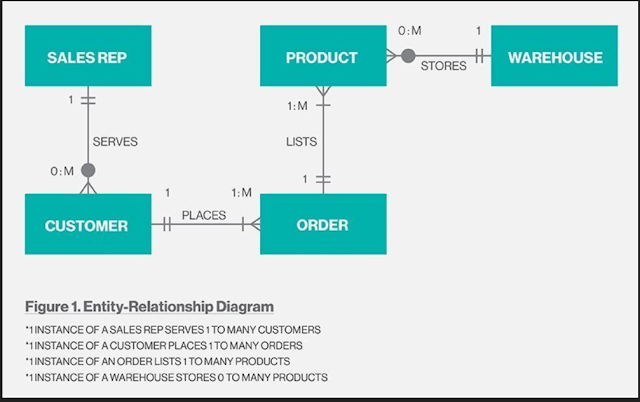What is an ERD. Define the RED related terms, including entities, attributes, cardinalities and relationships
What is an ERD?
Entity relationship diagram is what it stands for. These diagrams are also known as entity relationship models and ER diagrams. An ERD shows how entities in a database, such as people, things, or concepts, are related to one another. Moreover, an ERD will frequently depict the characteristics of these organizations. An ER diagram can be used to display the relationships between entities, their properties, and the entities themselves to demonstrate the logical structure of databases. This is helpful for engineers who want to document an existing database or develop a new database. (SmartDraw, 2023)
Example this one
Tableau Cardinality Settings in Relationships
There are three types of settings you can have active for cardinality.
One-to-one: When both fields being related have no duplicates – Tableau doesn’t have to do any aggregation at the data source level (least process heavy). (Ramos, 2023)
Many-to-many: Both fields have duplicates (or you’re not too sure about the dataset) – Tableau will intuitively aggregate data at the source level for both fields if need be (most process heavy). This will always be the default when creating relationships and is the safest one to use.(Ramos, 2023)
reference
Biscobing, J. (2019) What is entity relationship diagram (ERD)?: Definition from TechTarget, Data Management. TechTarget. Available at: https://www.techtarget.com/searchdatamanagement/definition/entity-relationship-diagram-ERD (Accessed: March 11, 2023).
IBM (2023) Cardinality, IBM. Available at: https://www.ibm.com/docs/en/cognos-analytics/10.2.2?topic=relationships-cardinality (Accessed: March 11, 2023).
Ramos, M. (2023) The data school - cardinality in Tableau Relationships, The Data School RSS. Available at: https://www.thedataschool.co.uk/marcelo-ramos/cardinality-in-tableau-relationships (Accessed: March 11, 2023).
SmartDraw (2023) Entity relationship diagram (ERD), Entity Relationship Diagram (ERD) - What is an ER Diagram? Available at: https://www.smartdraw.com/entity-relationship-diagram/ (Accessed: March 11, 2023).








Comments
Post a Comment